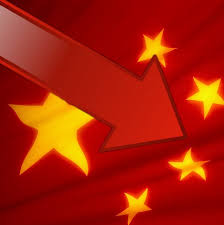
Cross-posted from Investing in Chinese Stocks.
Chinese Premier Li Keqiang slammed banks yesterday for only issuing large loans to big enterprises. Li wants to reduce to cost of financing, which is a very big deal considering the country is seeing a very low return on its debt. China pledges more financial aid for small firms:
After a weekly meeting chaired by Premier Li Keqiang, the State Council said many small Chinese companies still face financing difficulties, which could fuel risk in the economy.
So the cabinet said the central bank would raise the sizes of its “re-lending” and “re-discount” programmes to step up the supply of funds to smaller companies and the farm sector.
The central bank’s “re-lending” exercise issues loans directly to commercial banks, which in turn lend to businesses. The “re-discount” programme requires the central bank to inject funds into commercial banks by buying their bills. Commercial banks then lend the money on to companies.
“The total scale of credit supply is not small, but companies, especially those smaller ones, are still facing financing difficulties,” the cabinet said.
“This not only exerts a heavy burden on firms, it also weakens the effect of macroeconomic policies and brings about financial risks,” the cabinet said in an online statement.
To alleviate the financing challenges of smaller companies, the cabinet told banks to cut the time taken to approve loans.
Based on growth in nominal GDP and the growth in total credit, the return on debt is getting close to 20%, or 5 yuan in new debt required for every 1 yuan in GDP growth. The U.S. didn’t spend very long at that level in the early 2000s; debt growth accelerated and the return on debt plummeted, going negative during the recession. The U.S. economy was growing much slower, but looking at it as a return figure shows how the natural debt limit is being approached. Now, perhaps China can move this number back up through financial room, through redirecting capital flows away from state-owned enterprises and towards smaller companies, but this will hinge on the leadership’s ability to overcome political opposition.
The debt situation is presented differently at a second article titled China’s Total Debt Surges To 251% Of GDP. The conclusion is the same: the natural debt limit is approaching.
It is hard to see how China can boost growth without increasing debt, not when it has a debt based model and a burgeoning real estate bust. Here’s a warning from independent analyst He Zhicheng on real estate. He says prices cannot drop 15% (yoy) because that would mean that many individual projects might be down 50%, real estate investment might slow to 5% growth and GDP would slow to 6% growth:
To maintain macroeconomic stability over 7.5%, the most important factor is to not allow a real estate slump. How to define slump? A drop of more than 15 percent this year, is the slump. A 15% drop can not be allowed because when the statistics show 15%, some areas and projects are likely to be down 50%, the future trend is likely to exceed 30%. Real estate investment is likely to fall to about 5% growth, the total investment growth rate may be less than 13%, GDP will slide to 6% growth. Now many people are still expecting prices plummeted. Look at the issue from the overall situation, the overall look, if the economy is running smoothly, if there’s no anti-corruption, house prices falling by about 15% is nothing major, once the adjustment in place, it may not be out of the question. …….Prices may fall, but not plunge, can not have a “cliff” type fall.
If real estate prices cannot fall and China’s economy cannot slow, there is only one path forward: more debt. Which is why headlines such as flash manufacturing PMI bounces to 52 in July are not greeted with knee-jerk optimism.

